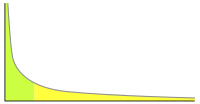
Photo from wikipedia
Abstract This paper presents a methodology for the localization of leaks in water distribution networks (WDNs) by means of the combination of a deep learning (DL) approach and a graph-based… Click to show full abstract
Abstract This paper presents a methodology for the localization of leaks in water distribution networks (WDNs) by means of the combination of a deep learning (DL) approach and a graph-based clustering technique. A data set for all possible leak locations is generated from pressure measurements and utilized to feed an image encoding process based on the Gramian Angular Field (GAF) technique, hence producing an equivalent data set of images. The pressure measurements are generated through the WDN simulation engine EPANET. To accomplish the training stage, the network is iteratively segmented into clusters using the Graph Agglomerative Clustering (GAC) method, and a deep learning neural network (DLNN) is trained to correctly indicate the leak location at one of the created clusters. The achieved neural networks tree can be traversed through its different branches depending on each classification result, until the final cluster is reached. Consequently, leaks can be located with a success rate that grows inversely to the size of the clusters. Due to the dependency of the latter on the number of clusters, which can be settled, the presented method is adaptable to the considered network features ( as e.g. dimensions, sensors placement and accuracy) and requisites (as e.g. localization area size).
Journal Title: IFAC-PapersOnLine
Year Published: 2020
Link to full text (if available)
Share on Social Media: Sign Up to like & get
recommendations!